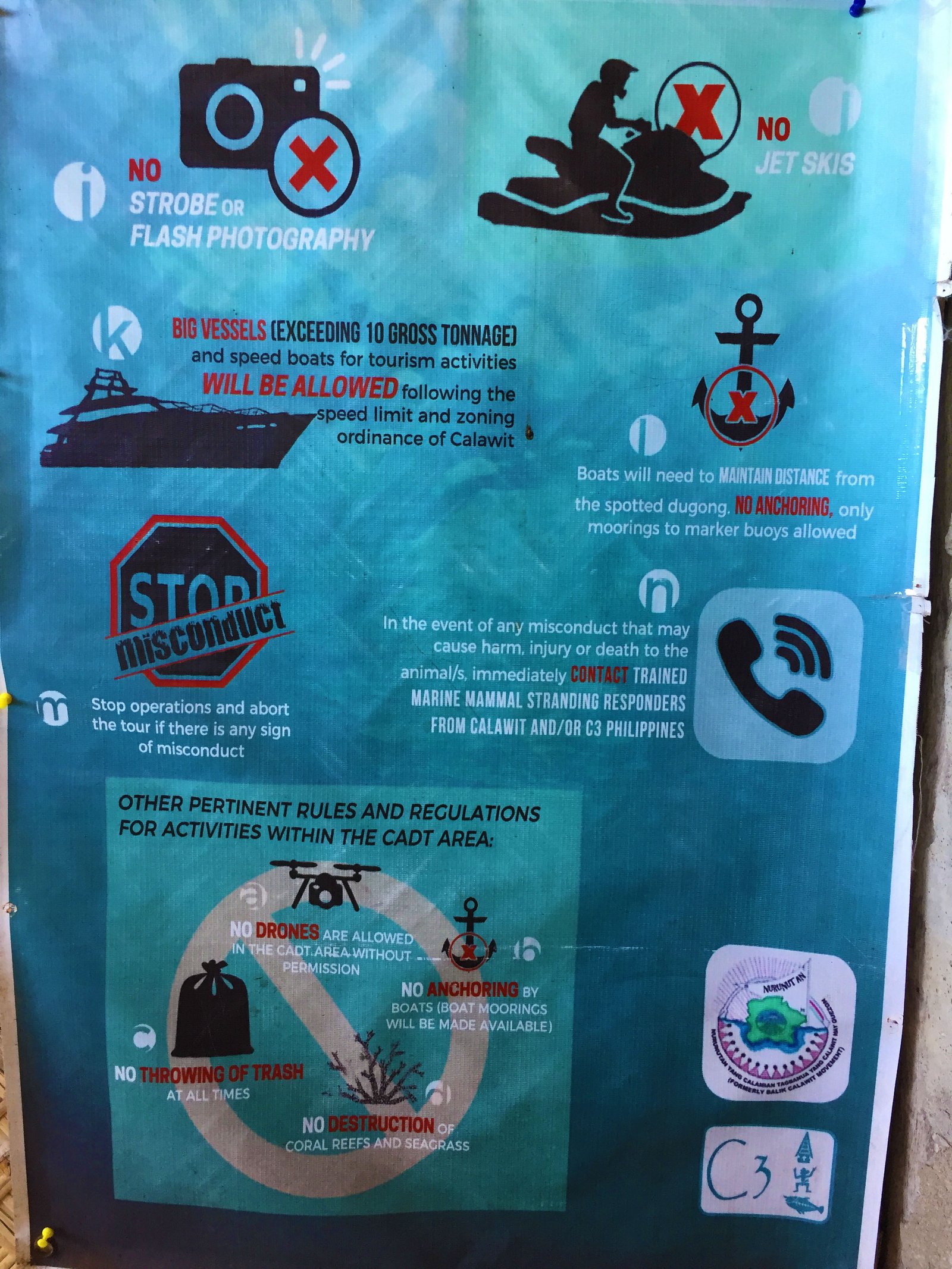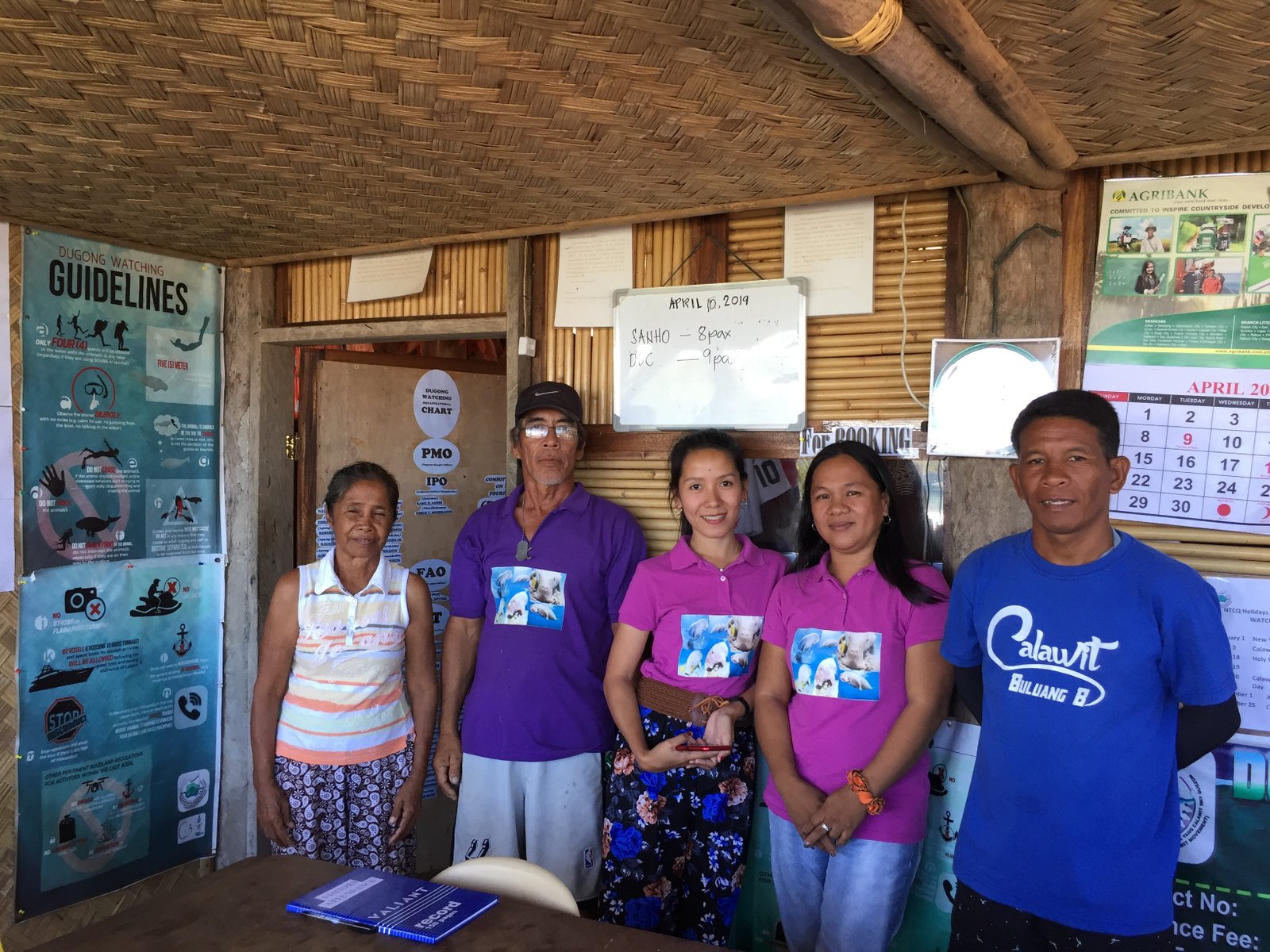
There’s more to Busuanga than its famed Calauit Safari Park. Off the northern coast of Calauit Island, tourist boats line up as spectators dive into the shallow teal waters to see the charismatic dugong grazing on the seagrass meadows.
Dugong watching has become a new thing in Busuanga since it was opened to tourists recently. Interestingly, it’s sustainably managed by the indigenous Tagbanua people who have realized the need to protect this critically endangered mammal.
“In the past, our ancestors had been consuming them as food. But when we’re made aware of the wildlife law and their critically endangered status, we’ve started protecting them,” said Jimmuel Novero, the community’s tourist relation officer.

Nonprofit organization Community Centered Conservation Philippines, Inc. (C3 Philippines, Inc.) has been educating the indigenous community on the ecological importance of dugong, and also trained some of them as Bantay Dugong (Dugong Guards) to protect the dugongs and make the dugong watching venture sustainable.

“C3 Philippines is continuously monitoring the dugongs in the island as Calawit (a sitio in Calauit Island) is one of the last strongholds of dugong in the Philippines,” noted Reynante V. Ramilo, C3 Philippines, Programme Coordinator.
“Capacity building of the Bantay Dugong members in the community are also being implemented for them to properly protect the dugongs and its habitats from human-induced threats.”
Ramilo also stressed that “the dugong watching activity and the Bantay Dugong work is not mainly for ‘profit.’” “We want to give more emphasis on the education and awareness for the tourist that dugong is very vulnerable to human threats and needs support for their conservation.”
Natives’ area ownership
Novero said the situation at the watching area off Aban-Aban Beach was different before when there were no wildlife watchers in place to regulate the tourist activity.
During a seagrass assessment with C3, their team saw a group of tourists chasing the seemingly troubled animal. “They were so many of them going after a dugong,” he said, adding that a limit on the number of visitors has to be observed so as not to stress the said animal.

After that incident, a stakeholders meeting had been conducted, leading to the passage of the policy requiring tourists and tour operators to drop by their office and pay an entrance fee of P500 before they proceed to the watching area.
“The dugong watching area is covered by our Certificate of Ancestral Domain Title (CADT) so they need to ask permission from us before the conduct of that tourist activity,” Novero explained.
“At first, the tour operators had objected but when we explained our right over the area as indigenous peoples, they have respected it and realized seeking permission is the right thing to do.”
Managing the tourist site
The indigenous community also decided to impose the carrying capacity policy or the allowed number of persons that can go near the dugong at a time.
Only 40 people are allowed to book per day, while only four visitors alongside one dive master and one dugong guard are permitted to interact with the dugong at a distance of five meters. Each session lasts up to 15 minutes.
“Dugong is very sensitive to stress and some unnecessary behavior of the tourist – not following the guidelines and protocols of the activity – may lead to stress of the animal,” Ramilo said.

At the watching area, the dugong guards brief tourists on the eco-friendly ways of approaching the said animal who surfaces every four to five minutes. “They are the ones who ensure the guidelines are strictly observed,” Novero added.


Of the more or less 27 dugongs in the area, two of them frequently show up to greet visitors. They name them “Pingas” because of the cut in its tail, and “Aban” who’s named after Aban-Aban Beach.
Currently, they set aside eight conservation areas off the island’s coast. “These are no-go zones because they serve as feeding grounds for dugongs,” Novero said.
Indigenous knowledge
Novero said the dugongs are part of their indigenous culture. “They are like us natives who have been inhabiting this place since time immemorial,” he added.

As part of their indigenous knowledge system and practices, these dugongs give them warning signs if there’s a storm coming up the coast.
“If we see them near the coast and the sea grass lying flat, that means there would be a storm arriving within the day or in the days to come. They alert us. And so we prepare by storing food and water, and by fastening our houses and boats,” he said.
Help to community
Establishing this community-based sustainable tourism site has helped the locals financially. In particular, there are 25 dugong guards, three admin staff and four project management officers who are employed in the said site.
From the entrance fee collection, the dugong watching office extends financial assistance to community members who are sick and under medication. They also donate to schools during intramurals and when athletes compete in sports events outside the island.
By choosing to experience this tourist activity, guests are also helping the Tagbanua community move forward.

The dugong watching office in Sitio Calawit, Barangay Buluang in Busuanga accepts bookings from 8 a.m. to 4 p.m. and starts accommodating tourists in the watching area from 9 a.m. to 3 p.m., all from Monday to Saturday.
Bookings can be done over the phone at 0967 320 7277, and cancellations should be made a day before the tour to avoid paying a penalty of P250.
Non-operation is set for the following dates: January 1 (New Year’s Day), April 5 (Calawit Fiesta), April 18 and 19 (Holy Thursday and Friday 2019), June 10 (Calawit Foundation Day), November 1 (All Saints Day), and December 25 (Christmas Day).
Every year, the dugong watching office also closes in August for the dugongs to take a whole month of rest while the community is busy planting upland rice.


















Discussion about this post